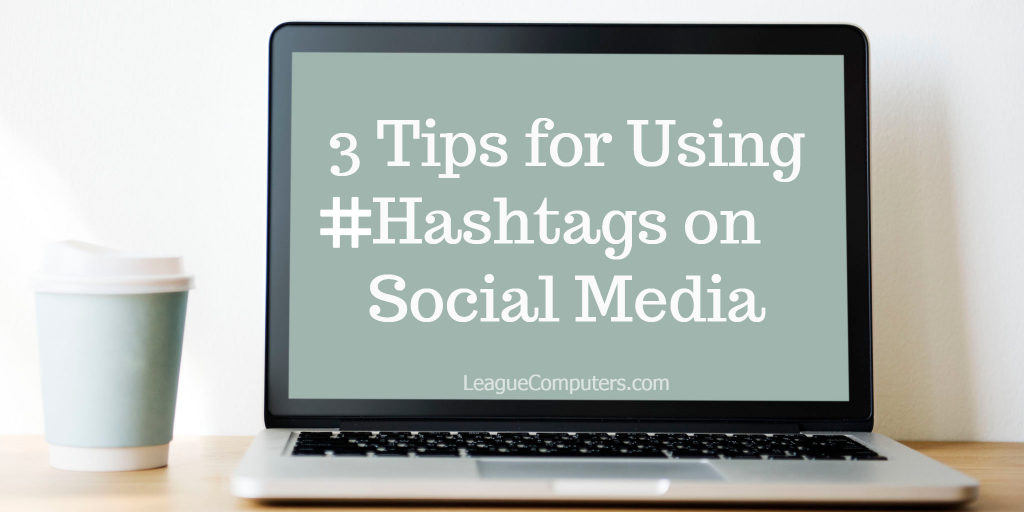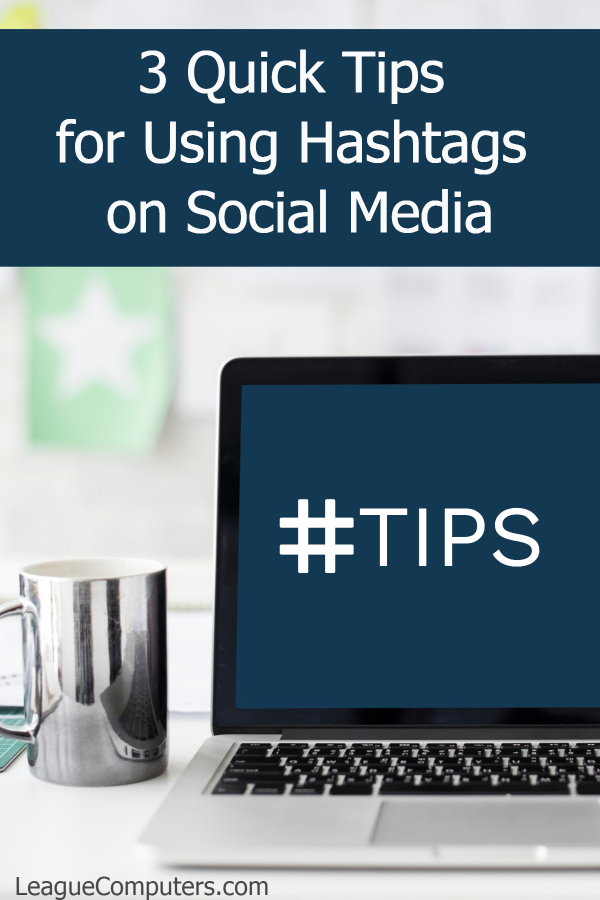
Hashtags are used on almost all social networks, and if you aren’t using them in your posts it’s time to start!
If you’re not quite sure what a hashtag is, then think of it simply as a quick and easy way to follow topics, events or conversations. To create a hashtag, place one or more words (with no spaces) behind a hashtag (the # sign) and that’s it! It now becomes a phrase that can be searched and tracked online.
For example, a few hashtags we include in our social media posts are:
#SocialMediaTips
#SocialMediaMarketing
#FacebookTips
(notice how it makes the hashtag easier to read when you capitalize the first letter of each word)
So here are 3 tips to help you use hashtags in your social media marketing:
1. Find out which hashtags your target audience uses
There are various ways to do this, but here are two suggestions –
Site Research
Go to each of your social platforms and then:
- Check out your customers’ and prospects’ posts on Facebook, Twitter, etc. – what hashtags do they include in their own updates or content they share?
- Look at your competitors’ posts – which hashtags/posts seem to get the most engagement on their social sites?
- Take note of industry influencers’ posts – again, pay attention to the hashtags used most often.
The platforms themselves have ways to search for hashtags:
- Go to a post on Google+, Instagram, Twitter, Pinterest or Facebook and click on the hashtag(s) in it. You’ll see other content with that hashtag pop up.
- Twitter has a display just for Trending Topics including hashtags.
- Twitter’s search bar and advance search option are both great ways to search for hashtags.
- Instagram’s Search function and (newer) follow-a-Hashtag option are built into the platform. Once you find a hashtag and click on it, you can check out its Top and Recent posts.
Free Tools
You can use free third-party tools to search for trending hashtags or hashtags similar to ones you already use. A few to check out:
Tweetdeck (for Twitter hashtags) – set up a stream just for specific a hashtag to see content in real time.
Paid tools and dashboards such as Hootsuite, AgoraPulse, Social Report have hashtag searches and/or tracking built into their sites.
2. Save time and make a list of your top hashtags
Use the data you’ve compiled from your research in tip #1 and create a list of the best hashtags to use in your social media posts. Don’t forget to include any hashtags unique to your product or services, as well as events that apply to your business.
Save your top hashtags on a Note on your phone, or use tools like Evernote or Google Keep to easily cut and paste them into your posts.
Start using these top hashtags on a regular basis so your posts are more likely to show up in other people’s searches.
3. Follow best practices on each social network
You’ll notice that hashtags are used slightly differently on each social network, and you should follow that network’s guidelines to appeal to more users.
For example, people generally use more hashtags on an Instagram post (at least 3, and sometimes up to 30 max!), while on Facebook, it’s a better idea to stick with 1-3 hashtags.
Most people find it annoying to #see #every #word #in #your #post #as #a #hashtag so I definitely recommend avoiding that practice!
As mentioned earlier, pay attention to how industry influencers (or top brands) are using hashtags on each social network, and you’ll get some good ideas for your own business strategy.
Updated tips and research in 2018, per social network:
How many hashtags to use on each major site:
Instagram: 11 hashtags are the optimal number (according to research); the maximum is 30. Users can now follow a hashtag, which means that they will see content in their feed from accounts they do NOT follow. So your content can potentially have much higher visibility if you’re using hashtags that your target audience follows.
Facebook: some research suggests posts with NO hashtags perform better than those with hashtags. The general rule of thumb is 1-3.
Pinterest: you can use up to 20 hashtags on a post; but the general rule of thumb is 1-3.
Twitter: the optimal number is 2; again, not as many as Instagram; the general rule of thumb is 1-3.
LinkedIn: the platform has brough back hashtags: try using 1 in your posts and track engagement.
Google+: used to have trending tags, but does not have that function now. Follow the general rule of thumb of 1-3 hashtags. Note that hashtags are built into Google Search, so posts that include a hashtag will show up in search results.
YouTube: the general rule of thumb is 1-3 hashtags; the maximum is 15. If you add more than 15 hashtags, YouTube will ignore ALL hashtags on your video.
How hashtags are used on each network from the Buffer blog:
“Rule of thumb: 1 – 3 tags is best over all platforms.”
Twitter: to categorize
Pinterest: to brand, and be specific (tags are only clickable in pin descriptions)
Instagram: to build community, and be unique/detailed
Google+: to categorize; autogenerates tags based on what it thinks your post is most relevant to
Tumblr: to categorize interests, can be specific and general (has a “track your tags” feature)
Facebook: sort of a hashtag fail – if your audience is very business-minded, follow Twitter rules; if it is community-oriented, follow Pinterest/Instagram rules
Use the 3 tips and the latest research to optimize hashtags in your social media posts so your updates get more visibility in the online world.
And if you need some help developing a hashtag and/or social media strategy, then contact us for a free consultation: Click here to request a Free Consultation
[post updated August 2018]

